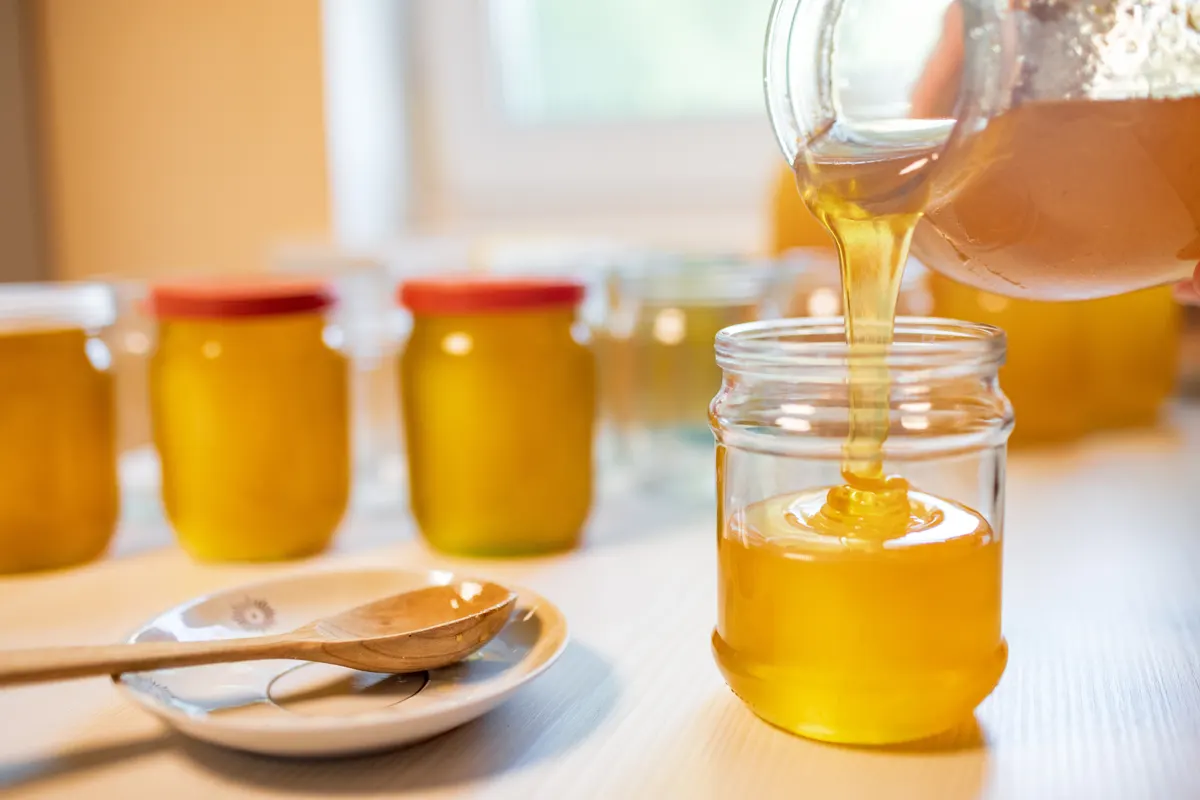
Honey is one of the longest lasting foods – and medicine – you can store in your pantry. It’s possible to keep a jar safe and sweet for years and years, if you don’t spoil it in a moment, accidentally, with a dirty spoon.
Let the following sink in, so you can see just how valuable honey is:
A worker bee only produces a total of 1/12 teaspoon of honey throughout their entire lifetime.
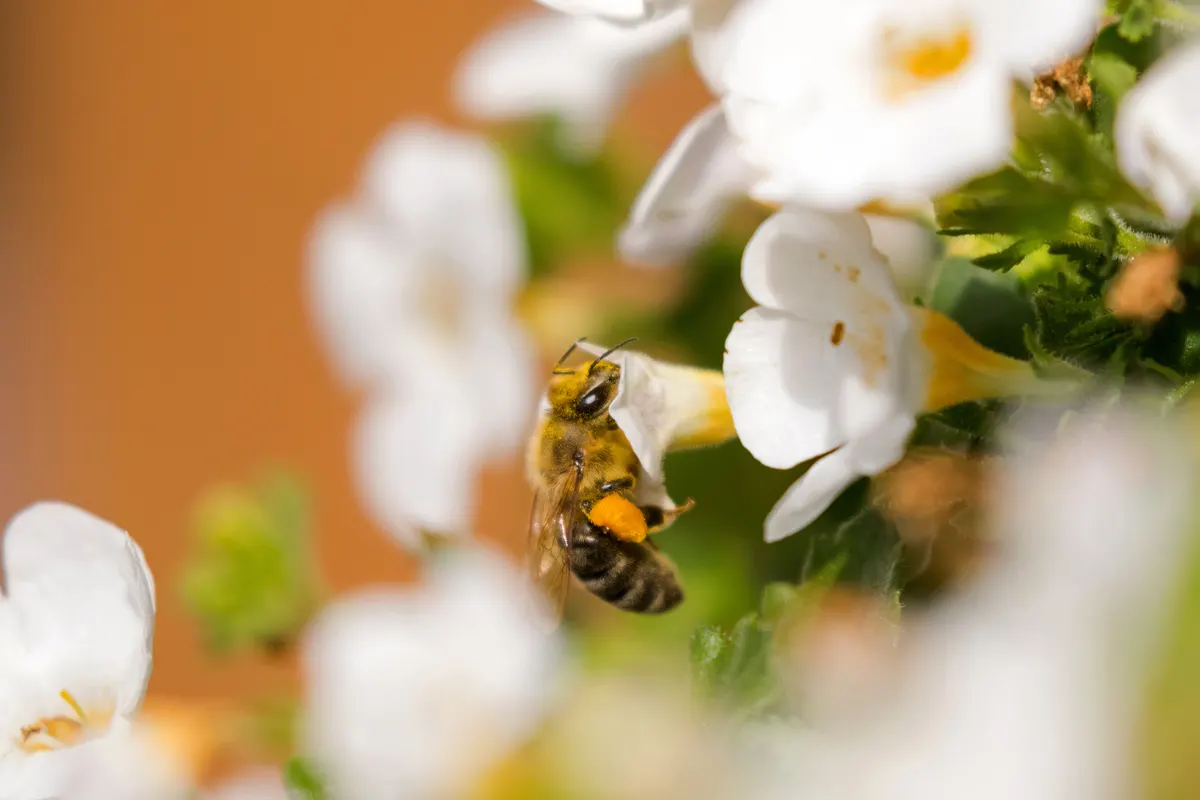
From that perspective, you can figure that it takes a hive of bees to produce a jar of delicious golden honey. That’s approximately 1152 busy bees to fill a 16 oz. jar.
Don’t let all that hard work go to waste by contaminating your stock.
This article will go over the do’s and don’ts of storing honey, so you don’t have to waste a spoonful.
Why should you store more than a single jar of honey?
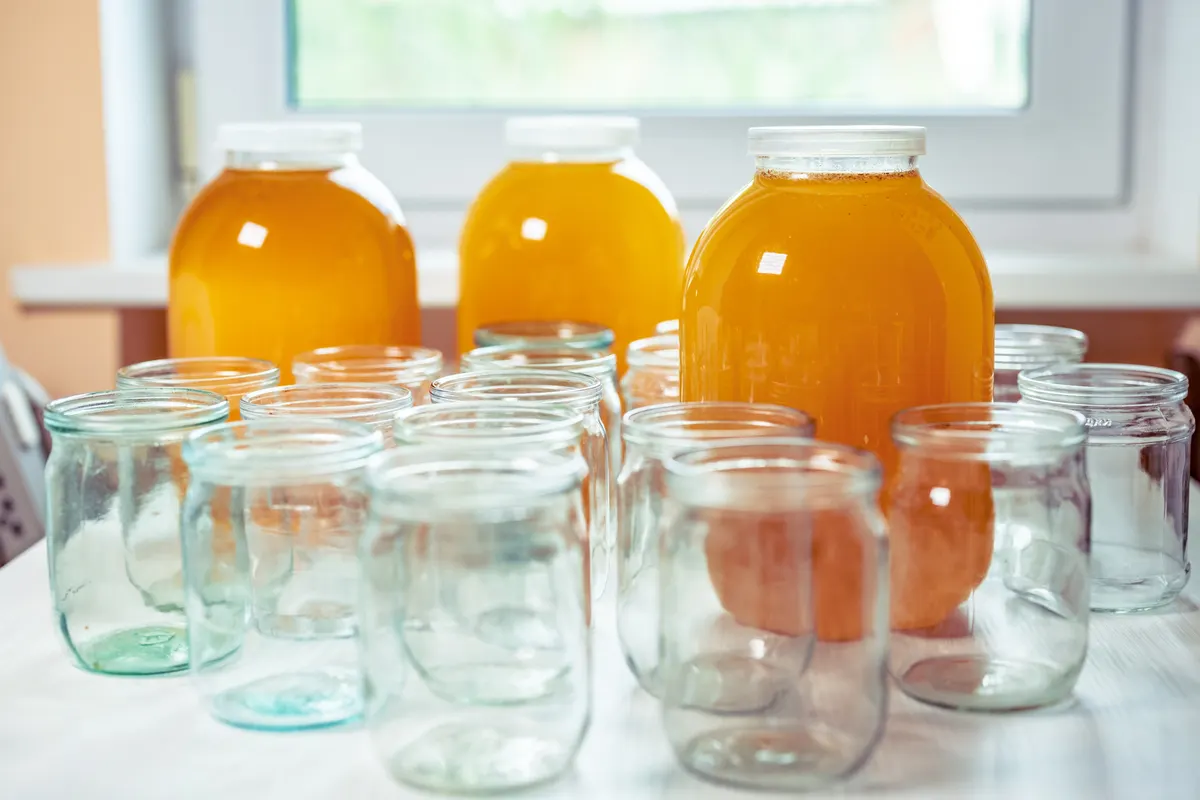
There are several reasons for storing honey at home, let’s start with flavor:
- honey is a sweet, delectable, natural sweetener that has a lower glycemic index than beet or cane sugar.
- it contains amino acids, vitamins, minerals like iron, zinc and antioxidants.
- honey is also anti-inflammatory, antibacterial and antifungal, wonderful from a medicinal perspective.
- buying local honey helps small beekeepers, it may also help relieve seasonal allergies.
- honey can be used in the garden.
- refrigeration is absolutely unnecessary.
- honey is a high-value product that can be used in canning, fermenting ginger, for making mead, or for trading when money is tight.
For all these reasons and more, you should always keep a few jars of quality honey on hand.
How To Store Honey For Decades
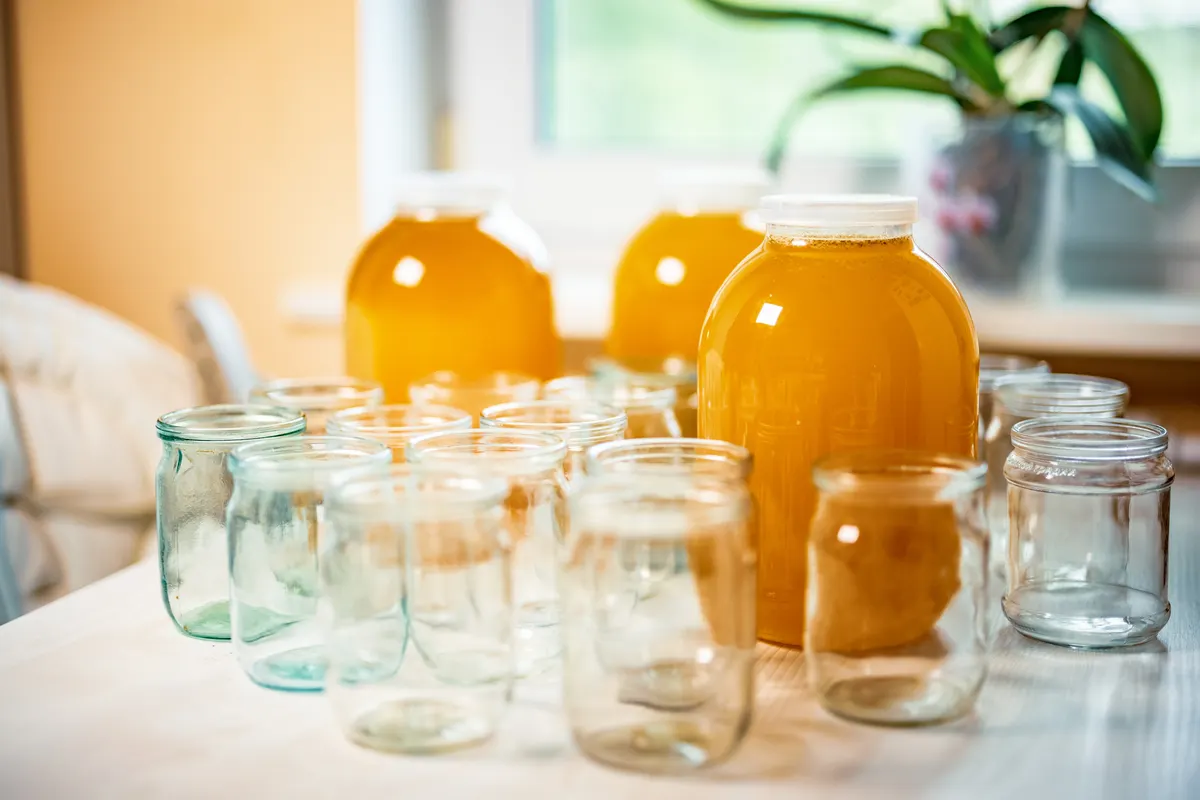
The first thing you need to know about honey is that it is hygroscopic. All this means, is that it has the ability to absorb moisture, as is the case with common table salt or sugar.
To keep the moisture out, all you need to do, is store your honey in a jar with a tight-fitting lid. Storing your honey in a glass jar is as ideal as you can get for long term storage. In a glass jar, honey will not lose water content, nor will it lose its flavor, texture or aroma.
For a short while, some food grade plastics are okay to use in storing honey. However, in the long run, there is always the possibility of chemicals leaching from the plastic into the honey. You don’t want that to happen.
Honey stored for longer than a few months in a plastic bottle is subject to being spoiled, in color, texture, taste and aroma.
Glass is definitely the way to store your honey for decades.
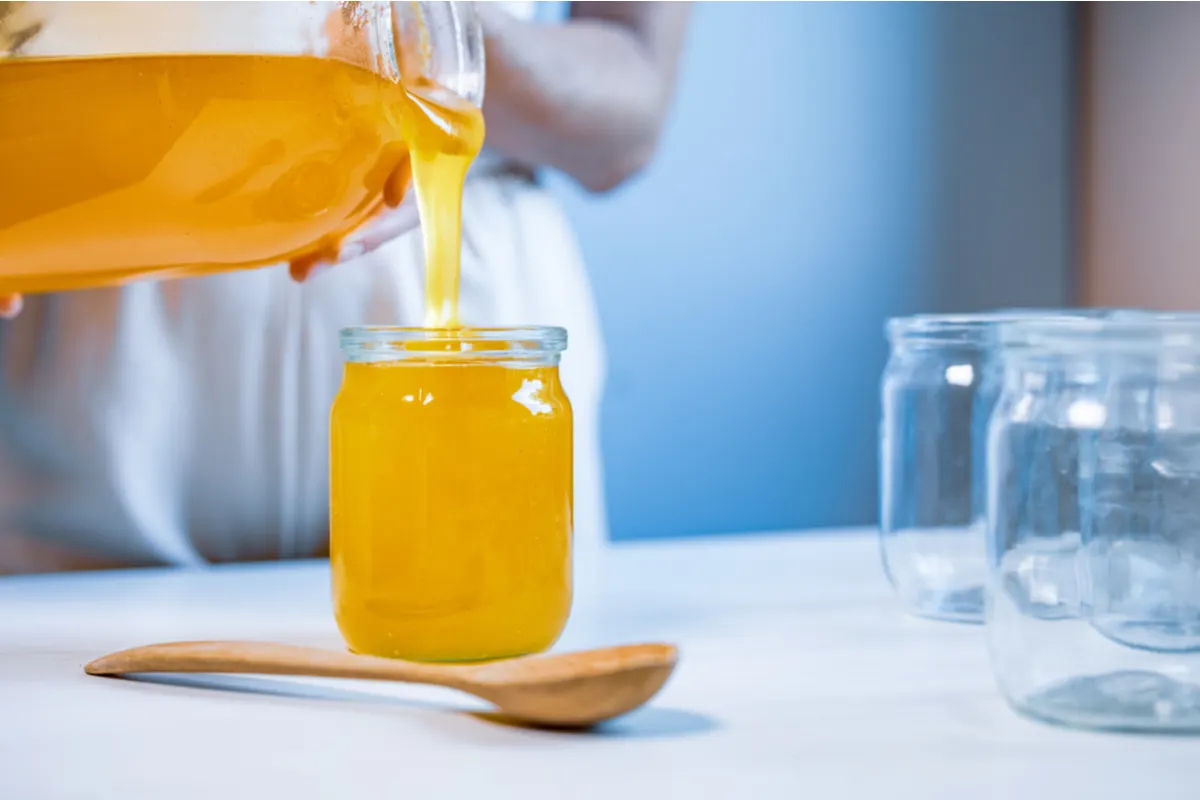
What about storing honey in metal containers?
Outside of stainless steel, food grade containers, metal should not be used at all when it comes to storing honey. Honey is acidic, with a pH ranging from 3.5 to 5.5, depending on the source.
Honey stored in metal will eventually promote oxidation of the container. You don’t want that to happen either. This may result in heavy metals being released into the honey, or it may lead to a decline in nutritional elements. Steel and iron are among the worst metals for storing honey, as rust may be an issue.
Stick to glass containers for long term storage of honey. Or use a more decorative clay honey pot for dishing up a smaller amount that will be used up faster.
What’s The Best Honey & How To Tell If Your Honey Is Real
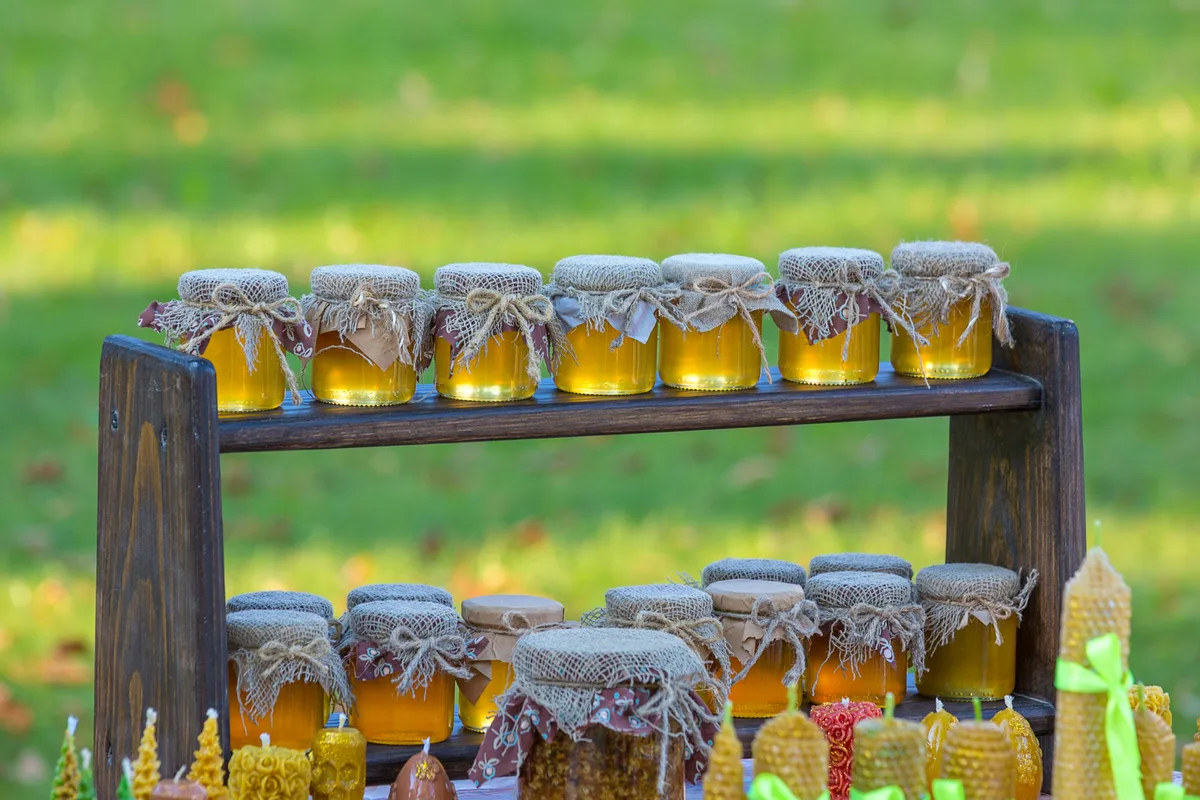
If you are going for quality, it’s wise to seek out the best raw honey around. Raw honey is untreated, unprocessed, unpasteurized and unheated for your benefit. Preserving your honey raw keeps all the natural minerals, vitamins, enzymes and phytonutrients intact.
Raw honey ranges in form from liquid to crystalized, colors are always affected by the pollen that the bees collect. That being said, unless you purchase honey from a beekeeper, you may not know if your honey is raw or not.
Any honey labeled as “pasteurized” is not raw honey. To further add to the confusion, labels such as “pure” or “natural” hold little meaning.
Organic honey is the best.
What’s best for the bees, is ultimately the best for you. Organic beekeepers follow a set of more stringent regulations that do not allow them to use non-organic honey, sugar, antibiotics or pesticides for their bees or the crops the bees forage on.
Raw honey is second best. Pasteurized honey comes in third. The latter constitutes a majority of all honey sold. All honey is beneficial for you. It’s all about good, better, best. Outside of this, it’s always a good bet to buy what is produced locally, even if it is minimally processed.
How do you know if your honey is really honey, or not?
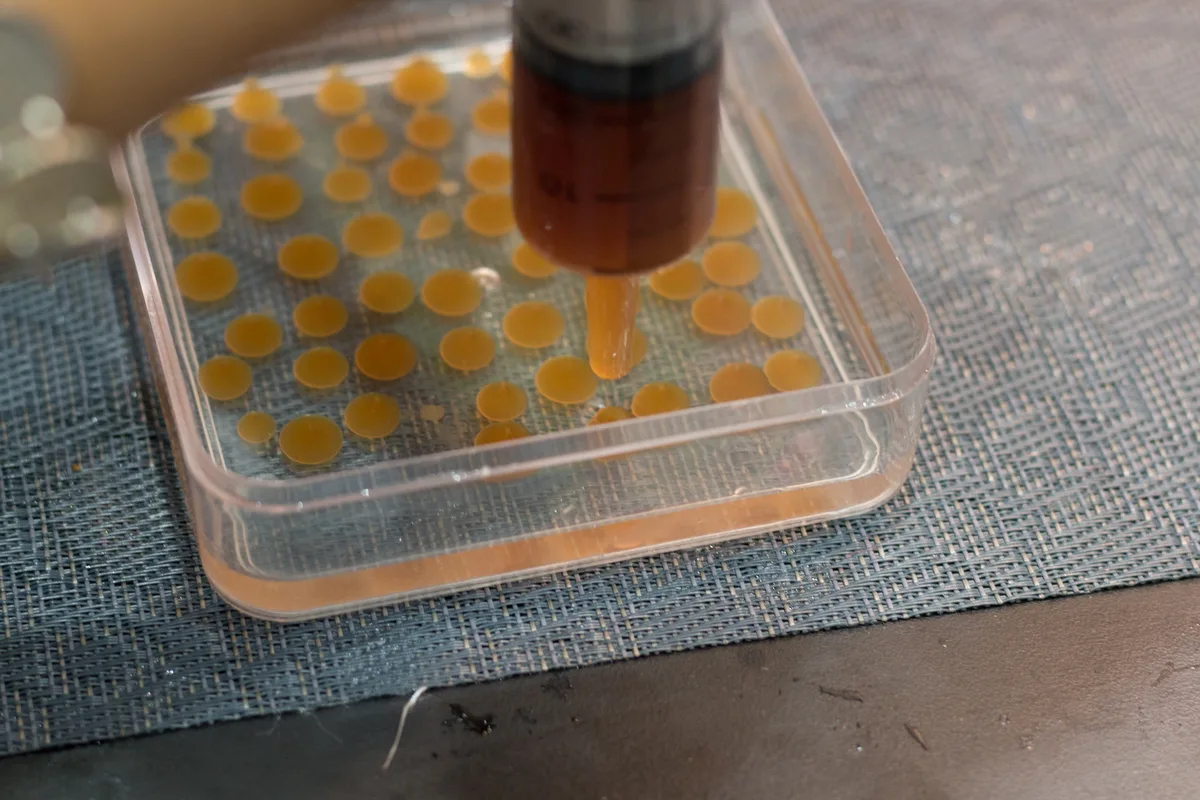
It’s been said that honey is the third most faked food in the world, right behind milk and olive oil. Fake honey is often diluted real honey with additives like high-fructose corn syrup or beet syrup. It looks like honey, but isn’t, it’s a far inferior product. Knowing where your honey comes from is a great step to take in avoiding this honey laundering.
A simple test you can easily do at home is to drop a teaspoon of honey into a glass of water. Fake honey begins to dissolve immediately, whereas raw honey will fall to the bottom of the glass.
Another way to tell is that raw honey will crystallize over time. Fake honey will stay runny.
How Much Honey Should You Store?
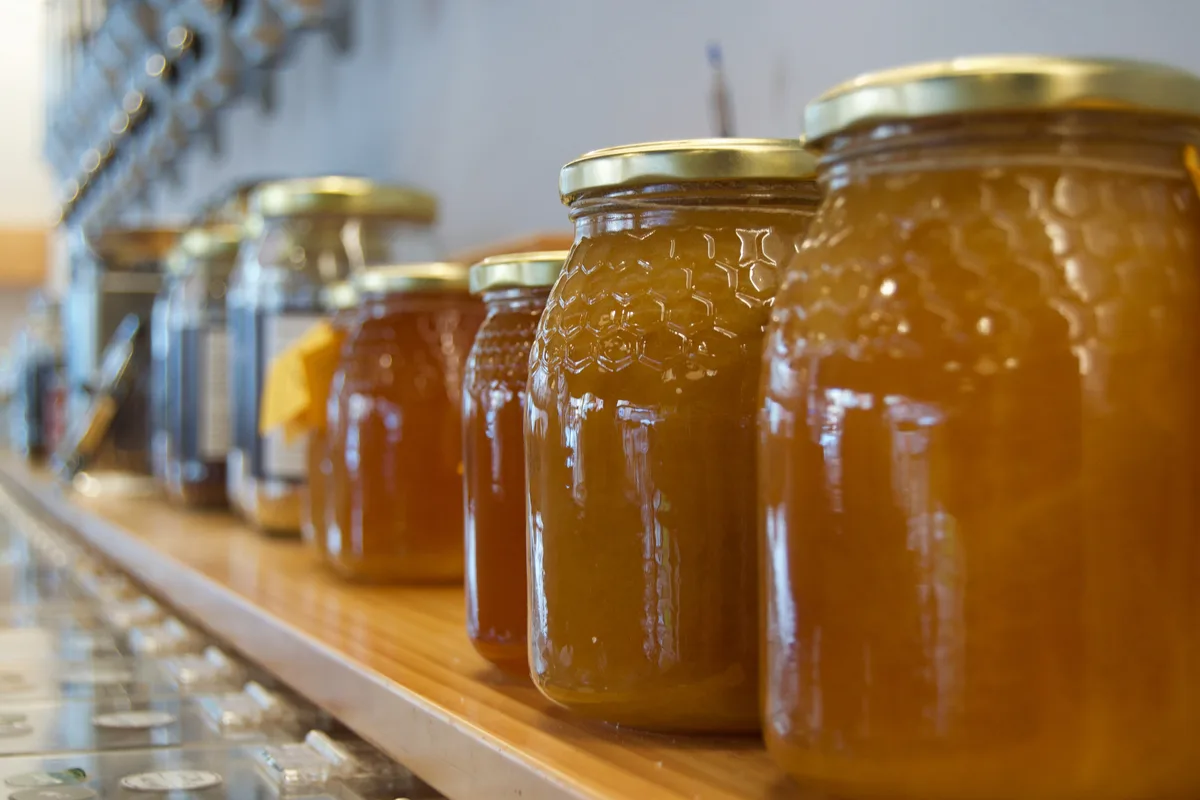
We often have anywhere from 3 to 8 jars of honey stocked in our pantry (in roughly 1 kg jars). It depends on the time of year and availability from local beekeepers. The choice to not eat processed sugar is a personal one, making honey our chosen sweetener for preserving foods like plum compote, raspberry syrup, canned cherries and all sorts of chutneys.
Some sources state that you should stockpile sugar to the tune of 60 pounds of the sweet stuff per person per year.
It’s up to you to decide how much, or how little, sweet you need to eat. Don’t forget there is always the possibility to introduce some maple syrup into your sweet storage as well.
The easiest way to figure out how much honey (or combination of other sweeteners) you need for an entire year, is to think about how much you consume on a monthly basis and multiply from there.
Be sure to label your honey.
Speaking of storage, have you ever forgotten to label your homemade preserves, only to not remember later exactly what’s in the jar?
It can happen with honey too, especially if you are purchasing different types of honey.
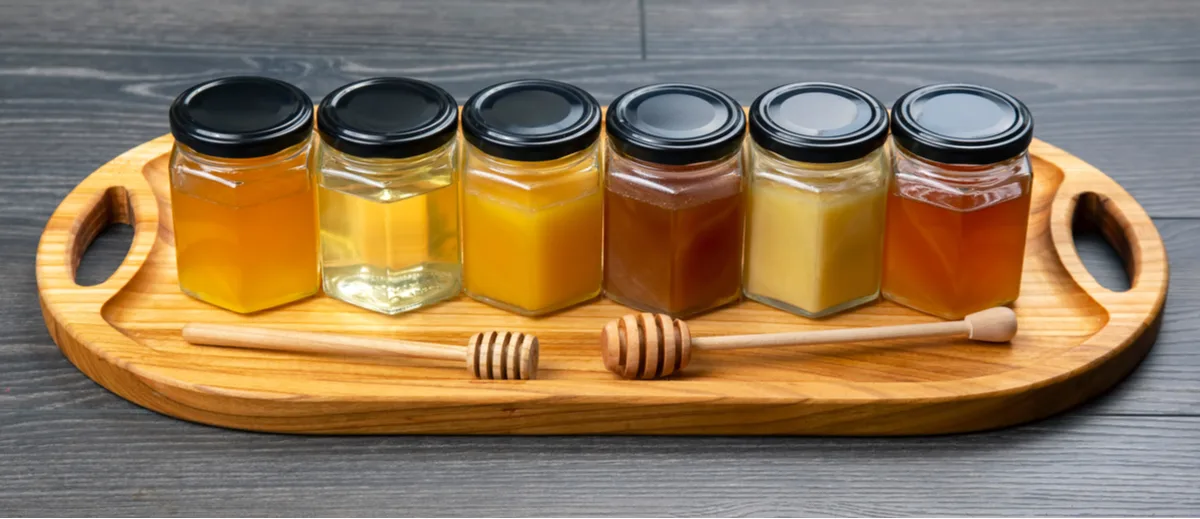
Not only should you note what kind of honey is in the jar, don’t forget to write the date of purchase as well.
If you purchase honey with a “best by” date, the chances of it being pasteurized or having additives, will be there. In that case, stick to consuming by that date. If your honey comes in plastic, transfer it to glass immediately.
It’s important to keep in mind, and a thought worth expressing again, raw honey does not have an expiration date. Pretty much the only time it will go bad, is if it becomes contaminated.
How To Properly Store Honey After Opening A Jar
Storing honey is simple enough, it should be kept in a cool location, out of direct sunlight.
After opening up a jar, however, the three things you need to watch out for are heat, moisture and bacteria.
Keep your jar of honey further from the stove goes a long way in increasing the shelf life. It’s wise to keep it out of the windowsill as well.
As far as moisture and potential bacteria is concerned, always use a clean, dry spoon for dipping into your honey jar. And never double dip into your honey pot with a peanut buttery knife.
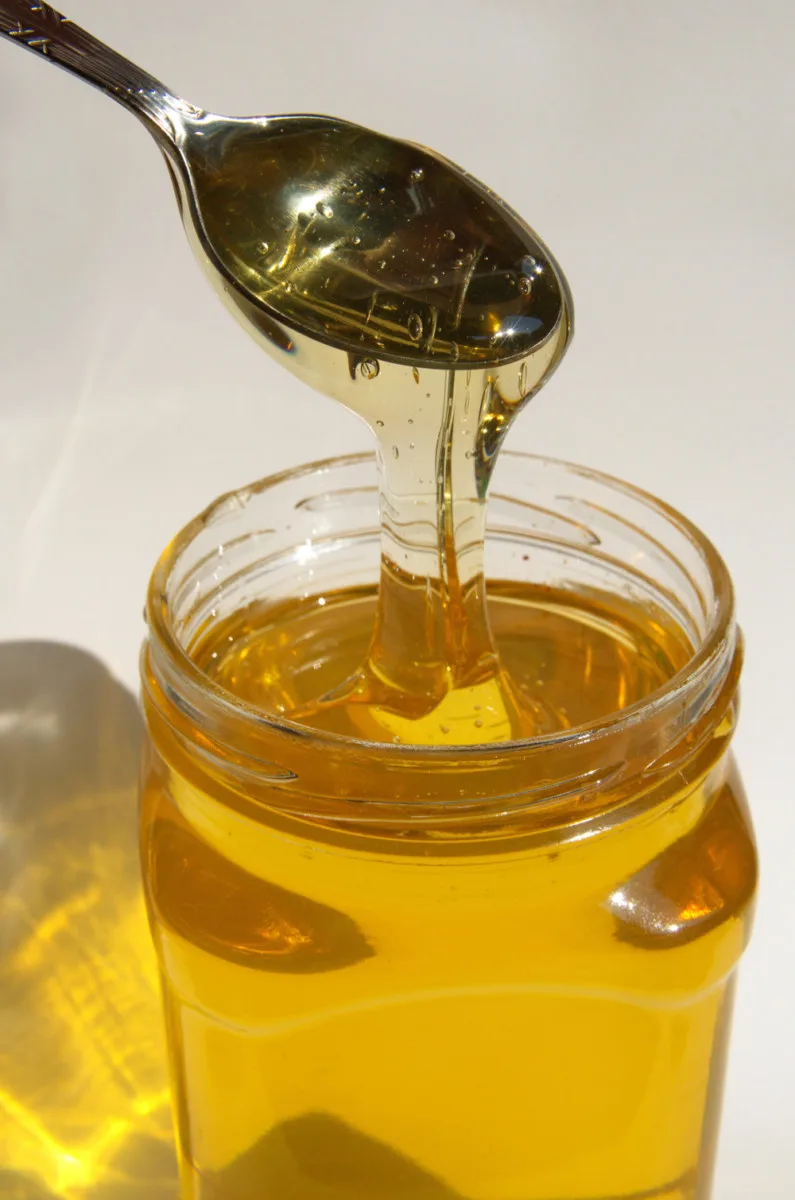
Never dip into your honey with any foodstuff covered utensil for that matter. You might have more spoons to wash, but it’s worth it to keep your honey safe.
If your honey becomes crystallized…
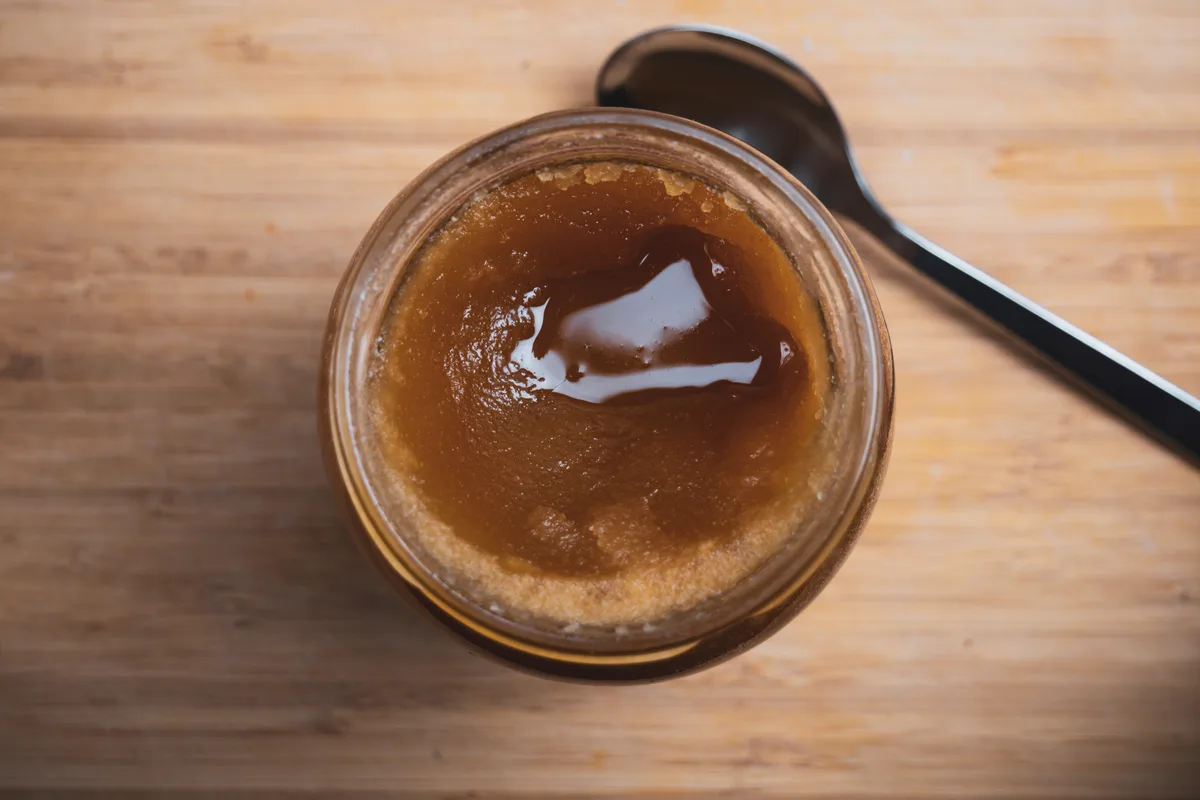
When your honey becomes crystallized this is a good thing. It means you have some quality natural honey on hand. But, if you’d like to use it in a more liquid state, all you have to do, is re-liquefy it.
For this purpose you place the glass jar of honey in a pan of hot water. Stir the honey while it comes back to its original consistency. Then spoon it out as normal.
A few things you should never do to your honey:
- never boil raw honey to decrystallize it – this will destroy the beneficial enzymes.
- don’t ever heat honey in plastic – it won’t taste good.
- never, ever microwave honey – this heats up the honey far too fast, again ruining the quality and nutrients.
- don’t liquefy the same jar of honey repeatedly – melt down only as much as you are going to use at a time.
Should I Store Honey In The Fridge?
While raw honey requires zero refrigeration, store-bought honey may benefit from cooler temperatures. In this case, putting it in the fridge may help to extend its shelf life. Be aware, however, that crystallization may occur.
Should I Freeze Honey?
If you sense that the quality of your honey is declining, yet you don’t want to use it up all at once, freezing honey is a possibility. Frozen honey will still be soft, never completely hard. At the same time, its texture and flavor will be unaffected.
Once frozen and thawed, do not refreeze it.
The Best Storage Containers For Honey
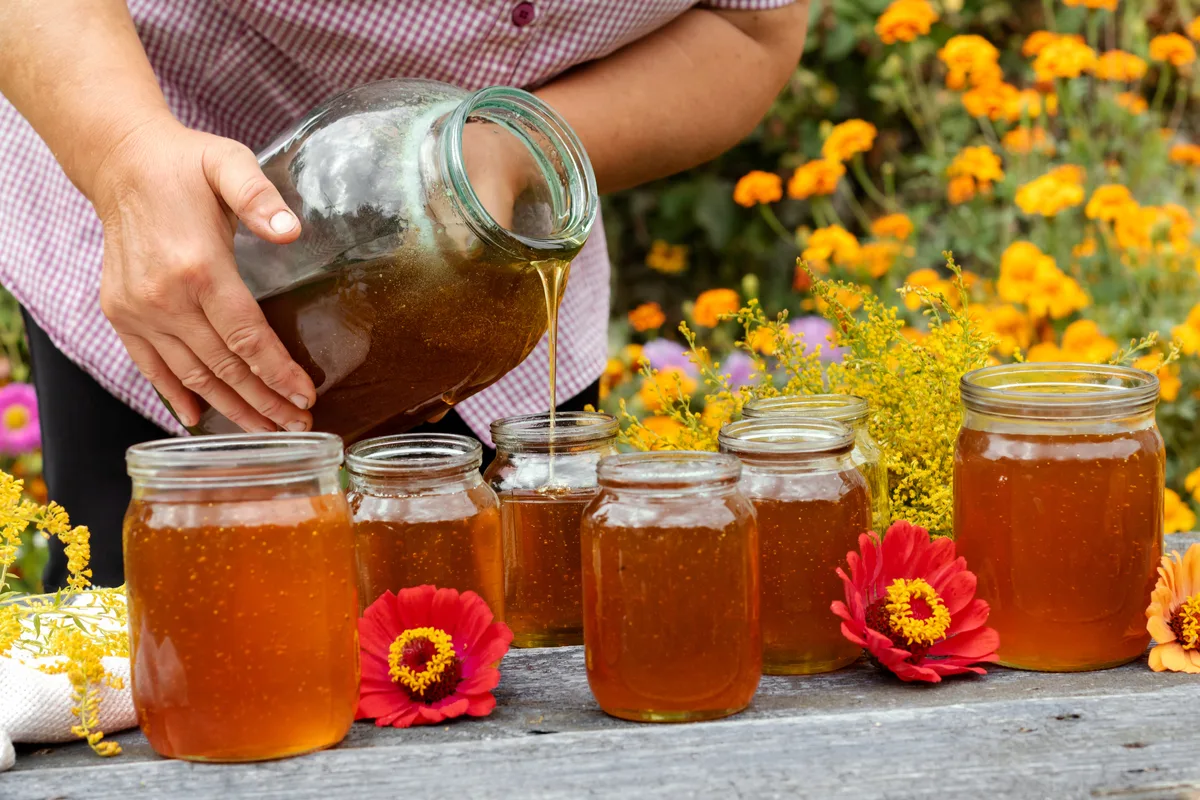
As mentioned, the best way to store honey is in glass jars. Brand new canning jars are perfect for this. One quart mason jars are absolutely ideal.
If storing in bulk for a short period of time, 1 gallon buckets are far easier to lift than 5 gallon buckets. Unless you are a restaurant, or a beekeeper, you probably wouldn’t have that much honey on hand anyway.
So long as the lid can be screwed on tight, you are good to go.
Which brings us to used jars – and used lids.
Can I Store Honey In Reused Jars?
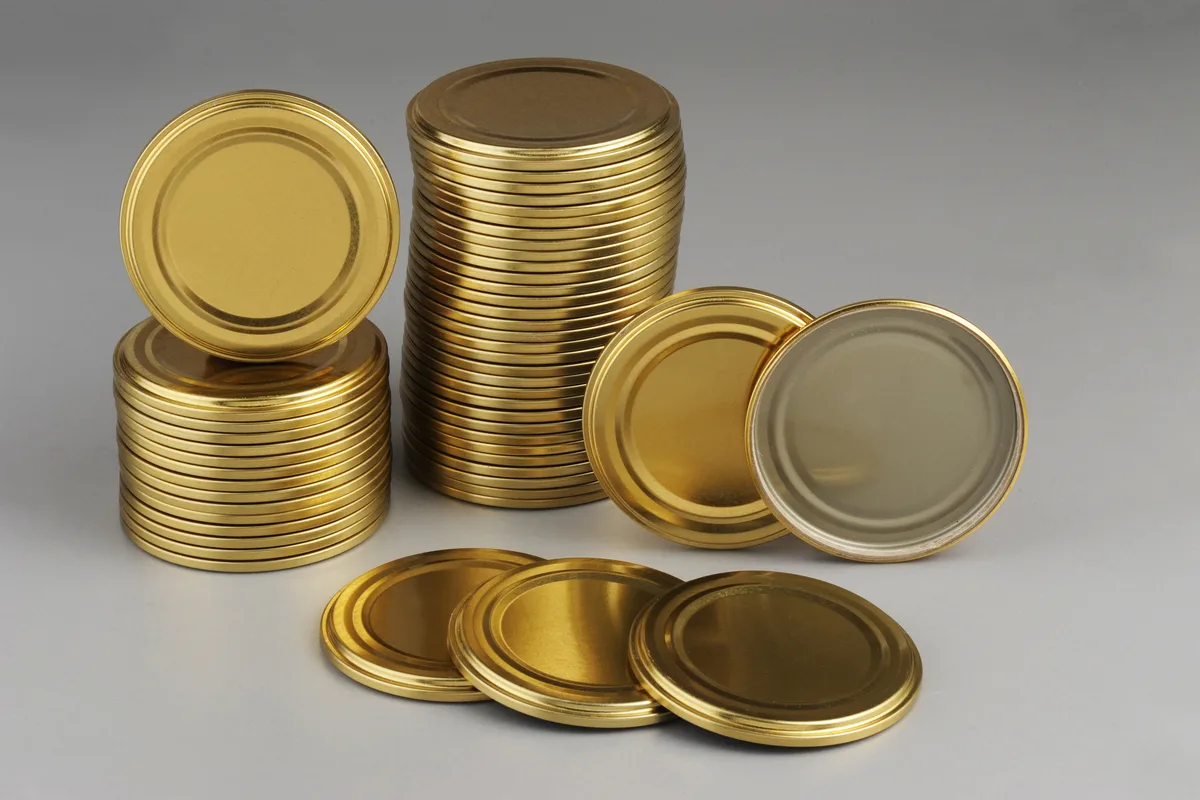
You can one hundred percent store honey in reused jars.
Reusing lids is another story. If you reuse a lid that used to cover salsa, olives, pickles, chutney or any other good, but strong smelling preserved food, it should be of little surprise that your honey will also pick up those aromas.
Reusing jars, yes. Using old lids, no.
You should always have a few replacement canning lids on hand anyways.
So the next time you stock up on honey, you are ready to put a jar of delicious sweetness away for a decade. As if a jar of honey could ever last that long in your pantry.

Get the famous Rural Sprout newsletter delivered to your inbox.
Including Sunday musings from our editor, Tracey, as well as “What’s Up Wednesday” our roundup of what’s in season and new article updates and alerts.

